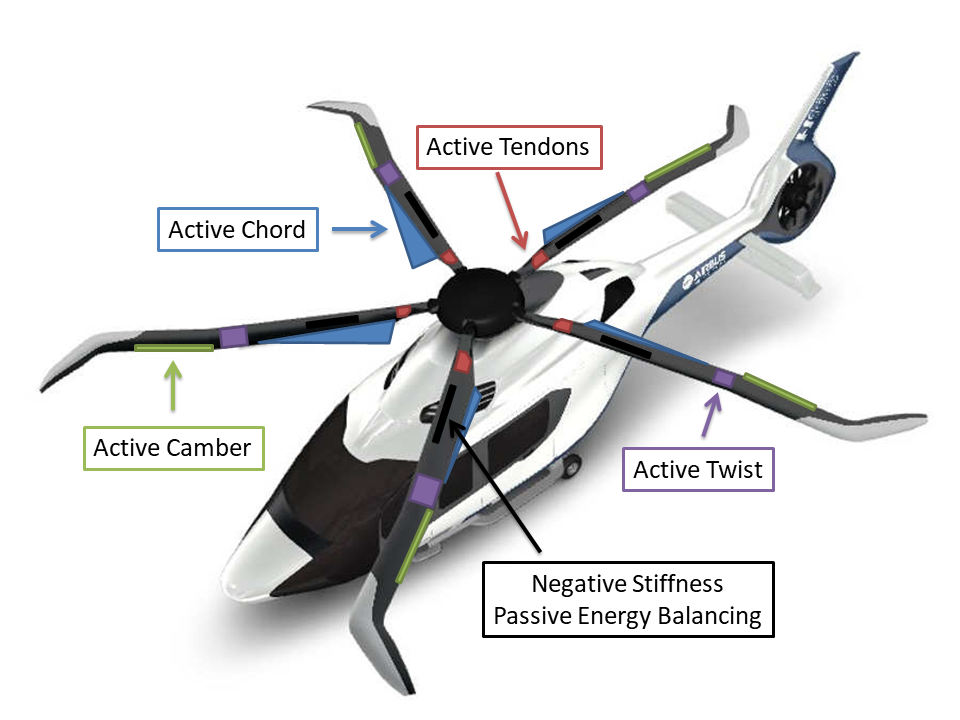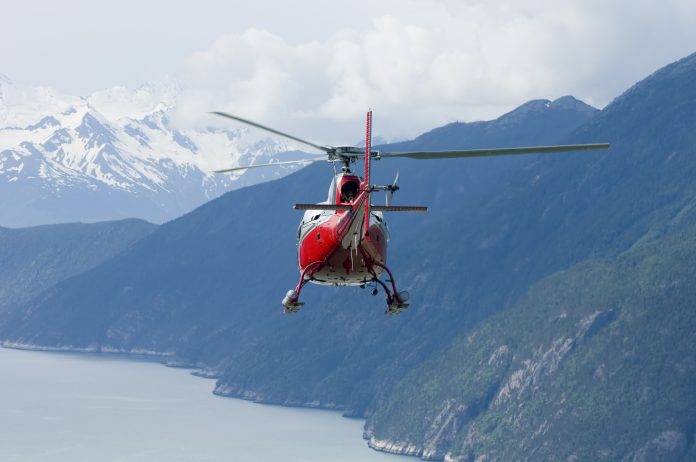Dr Benjamin King Sutton Woods, Senior Lecturer in Aerospace Structures at the University of Bristol, tells us all about Shape Adaptive Blades for Rotorcraft Efficiency (SABRE), a Horizon 2020 funded collaborative research program
Shape Adaptive Blades for Rotorcraft Efficiency (SABRE) is a Horizon 2020 funded collaborative research program which is now approaching the end of its four-year duration, with the final year having taken place under COVID-19 lockdown. In this piece, we will explore the SABRE vision of adaptive helicopter rotors and highlight the promising results achieved to date, while focusing in particular on how our interdisciplinary and adaptive approach to research has helped SABRE make tremendous progress even during a global pandemic.
The SABRE Vision
The SABRE project is driven by a vision of a cleaner, more sustainable rotorcraft with reduced greenhouse gas and noise emissions. One of the primary physical limits on the efficiency of existing designs is the fact that due to the combination of rotation and forward flight, the rotor blades see continuously changing airflows. Current blades, with their single fixed shape, must be designed as a compromise between these very different operating conditions – which leads to lost efficiency. If instead the blades can be made to adapt their shape in real-time, which we call ‘morphing’, then the rotor can be better optimised at all times, and our research has shown this can provide a 5-11% reduction in fuel burn and emissions.

Our Approach
In order to realise this vision, progress must be made on two tightly interwoven questions: How should a rotor change its shape to minimise emissions, and what technologies can we use to create those shape changes? SABRE assembled a team of international experts to answer these questions in an integrated, holistic manner, with six partners (University of Bristol, CIRA, DLR, Swansea University, TU Delft, and TU Munich) from across Europe. Six morphing concepts are being explored which actively control key blade design parameters, including two which change the amount of aerofoil curvature, two which twist the blades, one which extends the blade width and one which controls dynamic response to avoid harmful resonances.
To answer how the rotor should morph, powerful comprehensive analysis tools which capture the complex, closely coupled aerodynamic and structural response of rotors in flight are used to explore fuel burn reductions from the six different morphing concepts, thereby setting performance goals for these technologies. In parallel, extensive design, prototyping, and experimental work on the morphing concepts rapidly matures the technologies and creates detailed models of how much shape change is actually achievable. These morphing models are directly integrated into the comprehensive analysis, and the analysis results drive the design goals of the concepts in an iterative and coupled manner, ensuring convergence towards the best solutions.
Our Results
The SABRE research approach has successfully shown the promise that adaptive rotors have. Over the course of the program the increasingly sophisticated comprehensive analysis tools used, combined with the detailed models of the morphing technologies have shown that reductions of 5-11% in fuel burn and emissions are achievable. This is a major achievement in an industry with very mature design approaches, where 1-2% reductions are considered significant. Furthermore, a range of novel technological solutions have been used across a range of areas, including new highly flexible skin materials, multi-material 3D printed components, smart material actuators, compliant composite structures, and advanced concepts for tunable dynamics. While there is still a significant amount of research and development needed before these technologies are flying, our work has shown they are certainly worth pursuing further.
Adaptively Researching Adaptive Rotors
It needs to be stressed though how significant the pandemic lockdown was on the course of our research program. The two coupled workstreams were designed to build up to major wind tunnel and whirl tower testing activities in the final year to validate the technologies and analysis under relevant levels of aerodynamic and rotational loading. Workshop and lab closures and delays in sourcing materials and equipment caused by the pandemic have therefore naturally led to significant difficulties.
Despite this, tremendous progress has still been made, with all of the experimental test articles now complete or very nearly complete, and testing underway. Key to this result has been the willingness, driven by necessity, to adapt our design, manufacturing, and testing procedures to the realities of the world we are currently living in. With limited access to the lab to run experiments, we doubled down on detailed numerical simulations. With restrictions on travel to test facilities, we have found ways to emulate the aerodynamic and rotational loading so partners can test in their own labs. We have had to be extra clever in our designs to work around limitations in materials and equipment.
So the key point here is that the very same approach we are proposing to employ as a technological solution to reducing the environmental impact of helicopters has already shown its worth as a management approach for running a multi-national research program in an incredibly challenging and rapidly changing working environment. If this pandemic has taught us anything, it is the value of Adaptability, and it is not stretching reality to say that there is really no fundamental difference between the technological approach of Shape Adaptive Blades for Rotorcraft Efficiency and the adaptive mindset of the engineers trying to implement that approach.
This central lesson we have learned will serve our consortium and our industry as we move forward in fulfilling our obligations to the beautiful planet we live on.

SABRE has received funding from the European Union’s HORIZON 2020 Research programme under the Grant Agreement no. 723491.
*Please note: This is a commercial profile











